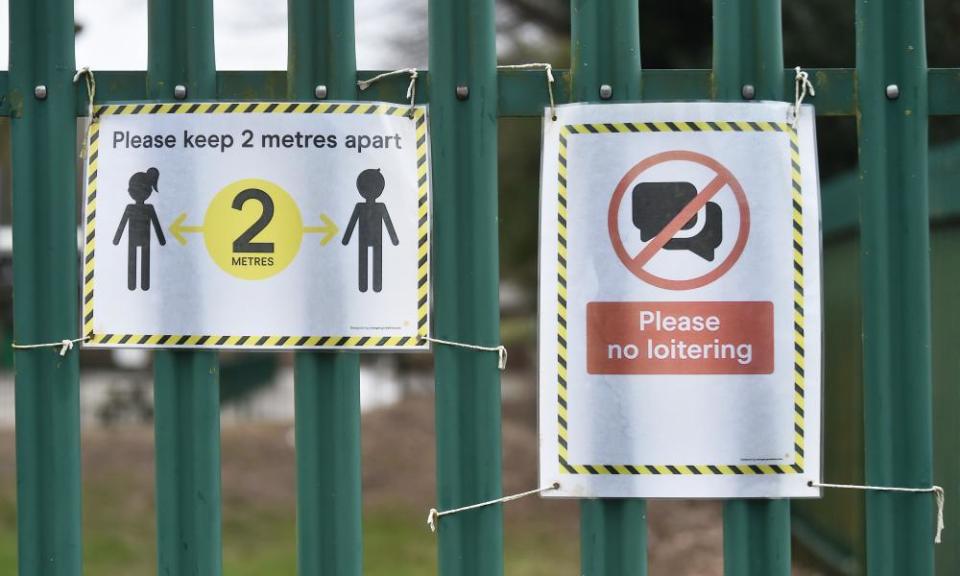Schools: ventilation and testing will be key in England's 'big bang' reopening

The “big bang” reopening of all schools and colleges will start in England from Monday.
University students on practical courses can also return to face-to-face learning, while breakfast and after-school clubs, including children’s sports activities, are allowed to reopen where necessary to help parents to work.
But given warnings by the Scientific Advisory Group for Emergencies (Sage) that the reopening could increase R by up to 50%, should parents be worried? The Guardian spoke to a number of experts about what to expect …
“We will see localised outbreaks …”
Irene Petersen, professor of epidemiology and health informatics at University College London, said: “I do think it’s time to bring children back to school, but I’m concerned about this big bang reopening. I would have preferred to see them starting off with the primary schoolchildren, and taking a more cautious approach.
“We are now dealing with a different virus to the one we were dealing with in the autumn. The B117 variant is much more infectious – and potentially much more infectious among young people – which I think is what we saw before Christmas, when there was a surge in infections among secondary school children.
“My concern is that we will see localised outbreaks. There are some areas of the UK where you have really low infection rates, but there are other areas where infection rates are still high.”
Julian Tang, a consultant virologist at Leicester Royal Infirmary and honorary associate professor at the University of Leicester said: “I’m not saying the whole country is going to explode into a fourth wave, but it depends what people do locally.
“Some schools are choosing to be more cautious than others. If you impose restrictions like reduced occupancy, opening the windows, masking some of the younger pupils, as well as mandatory masking of secondary school children, then schools will be able to reduce transmission. But I predict local outbreaks, particularly in those areas where schools are insisting on fewer precautions.”
All primary and secondary schools have been closed since 5 January following the introduction of a third national lockdown in England, with only vulnerable children and those of key workers allowed to attend schools for face-to-face learning.
Testing could be a fantastic tool
A key difference compared with the autumn term is that families with children in school or college will be able to test themselves for coronavirus twice a week using lateral flow tests, regardless of whether anyone has symptoms. This also applies to anyone in their childcare or support bubbles.
“They could be a fantastic tool to keep R below one, but it depends on their uptake,” said Petersen.
She said the government should do more to inform parents about the main purpose of the tests – to act as an early warning of school outbreaks, rather than identifying every last case. “It doesn’t matter if not everyone is doing it. As long as there is a good proportion who are regularly taking the tests, we should be able to identify outbreaks and intervene early.”
Although schools would have to send students home for several weeks to contain the outbreak, they should be able to reopen more quickly.
“My fear is that it will be left up to schools and headteachers to decide how these tests are used, what they mean, how they’re interpreted, and what you say to people about them,” said Gabriel Scally, visiting professor of public health at the University of Bristol and a member of the Independent Sage committee. “If tests are just scattered around like pixie dust, they will be possibly worse than useless, because of the significant risk of false negatives (where the results say you don’t have Covid-19, but you really do).”
Keep classrooms ventilated
Scally is particularly concerned about the lack of clear guidance on ventilation for schools, or ways for parents to assess how well ventilated their children’s classrooms are. “We know that the virus is airborne and ventilation should be a major priority. If you were a parent in New York City, you would be able to look up a report on ventilation for your school, and know whether the classrooms have got windows and if they open; whether it’s got a fan blowing air into the room from outdoors or pulling air out of the room; whether there’s mechanical ventilation; and what the level of filtration is. All of that stuff is really important, but we haven’t got off first base with these things.”
Others are more optimistic about the prospect of schools reopening. Caroline Relton, professor of epigenetic epidemiology at the University of Bristol and lead of the COMMINS study that is examining infection patterns in schoolchildren, said: “Infection control measures are firmly embedded in schools now, so major outbreaks are unlikely in my opinion.
“Although some infection may arise, the impact will be much lower than it was a few months ago, due to the vaccination programme, which makes it much less likely that elderly relatives will become severely ill from Covid-19. So, even if infection levels are equivalent to early in the autumn, the consequences of this will be less severe.
“On this basis, it would seem that the gains to children and their families from resuming face-to-face education greatly outweigh the possible detrimental consequences of a small increase in infection levels in the wider population.”
Dr Ines Hassan at the University of Edinburgh added: “In Scotland, schools have been open for in-person and full-time learning for early learning and primary schools for two weeks now. Although it is still too early to fully understand what the impact will be, positivity rates have remained fairly constant since schools have opened.
“Transmission of the virus can of course occur in school settings, much like any other setting, but levels can be kept low through stringent mitigation measures, including the use of masks by staff and older children.”

 Yahoo Finance
Yahoo Finance 